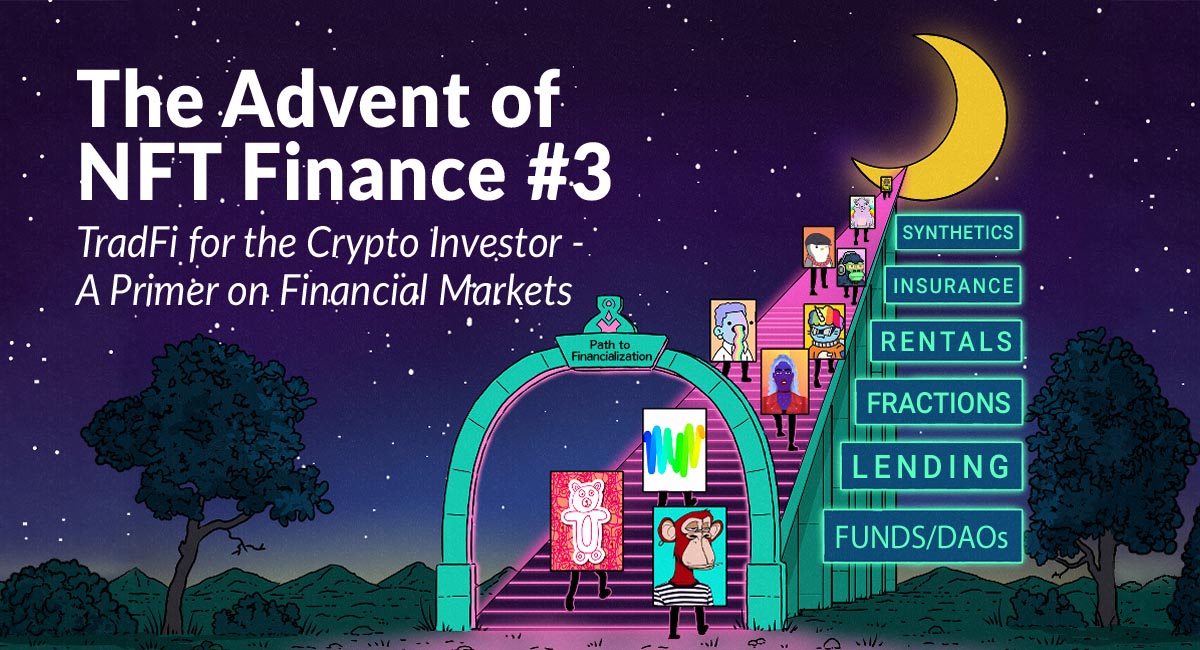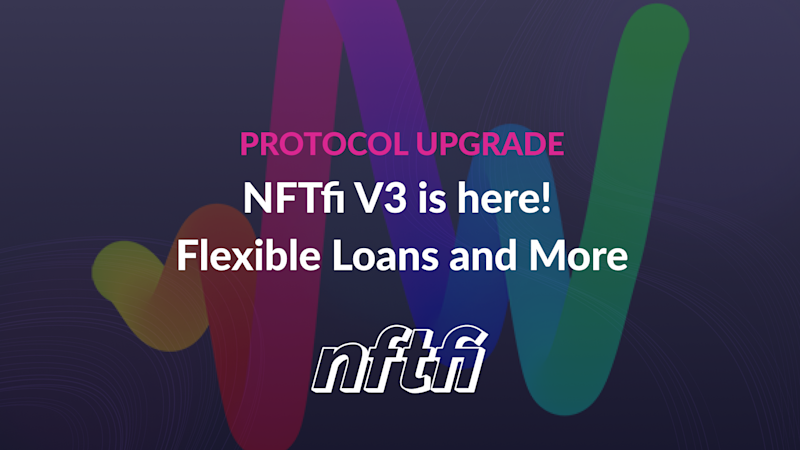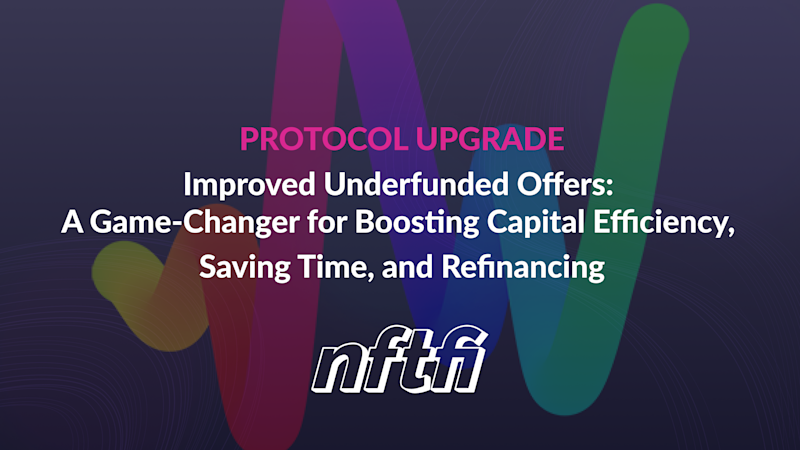The Advent of NFT Finance #3: TradFi for the Crypto Investor — A Primer on Financial Markets
June 01, 2022 ・ 15 min read

The third in a series of articles exploring the systemic impact of NFT Finance on the mass adoption of NFTs — within the Art & Collectibles vertical and beyond. A research collaboration with CADLabs.
By Giulio Trichilo and Jonathan Gabler
INTRODUCTION
In this article, we take a step back to talk about Traditional Finance (TradFi). Why? We envision this series as an end-to-end resource for understanding the NFT space and the prospects of its Financialization. To fully unpack the possibilities and potential impact of this relatively new area, NFT Finance, certain aspects of TradFi are important background. We only cover concepts that have a direct comparative basis with Traditional Art & Collectibles (Trad A&C), and hence, as we argue, NFT A&C and the broader NFT space. This article’s final focus, liquidity, which can be most broadly defined as an asset’s ‘convertibility to cash,’ is important in all markets but naturally requires different assessment criteria when considering a share of Apple stock versus a Picasso painting.
We begin with an introductory discussion on the role of global financial markets in the context of the real economy and how this motivates the financial sector’s importance. We then provide a high-level overview of the main moving parts of modern financial markets, relating to NFT markets or broader crypto, where parallels are appropriate. We first focus on the distinction between money markets and capital markets, before differentiating between primary and secondary markets. This overview will offer many useful comparison points for understanding Trad A&C and NFT markets, which we will dive deeper into in the following articles in this series. Finally, we discuss some of the determinants of liquidity in global markets, which likewise serves the purpose of providing a comparative basis for discussing Trad A&C Markets in Article 4, as well as crucial context for the development of NFT Finance.
FINANCIAL MARKETS AND THE REAL ECONOMY
Financial markets have wide participation and large capitalizations because the financial economy has a day-to-day impact on the real economy.
Global financial markets and real economic activity (the non-financial elements of an economy that produce goods and services) are inextricably linked. The largest classes of (fungible) assets that are traded on global financial markets are equity and debt instruments. These directly and indirectly impact cash and value flows available to businesses which operate in the economy, therefore having broad societal effects far beyond the operations of the markets themselves [1, 2].
It’s important to preface the discussion by keeping in mind that the economic model of most developed countries is that of a ‘mixed economy’. On a spectrum of economic systems from fully free market (demand and supply govern everything) to a full command economy (the state controls all economic decisions), this tends more towards the free market system. In principle, the ‘invisible hand’ [3] of market economics drives efficiency and competitiveness, but the government has a role in making sure some vital resources are allocated according to schemes which sacrifice market efficiency for equitable access, and perform regulatory actions to discourage illicit activity [3].
In the financial economy, the more systemically important the asset class, the greater the market participation. However, not all asset classes are systemically important in the first place. When it comes to systemic failure, this is linked to systemic importance — it is a size game. It’s important to keep in mind, though, that this failure may originate from spillover effects in markets for niche financial products linked to systemically important asset classes. The housing market bubble bursting in 2008, due to the over-Financialization (an abuse of Financialization) of real-estate backed instruments is perhaps the most famous example.
Is crypto a systemic sector? The market size for cryptoassets is valued at around $2.5T at the time of writing, and it is still considered a ‘fringe asset class’ due to its size and adoption when compared to global equity markets. However, recent regulatory attention has nonetheless been directed towards where TradFi and DeFi intersect — namely facets like the application of securities laws to cryptoassets and the presence of stablecoins in general.
Now that we’ve established the interconnection between the financial economy and the real economy, we need to know how it works in practice. The financial economy operates through financial markets, so let’s begin by defining them.
MARKETS AND FINANCIAL MARKETS
So, what is a market? This may seem like a basic question, but it is fundamental to constructing and understanding the Financialization of both Trad and NFT A&C, and the advent of NFT Finance more broadly.
At its broadest, a market is defined as a “space that facilitates an economic transaction between parties” [4]. In a two-sided market, these are buyers and sellers. The nature of the “economic transaction” depends on the asset exchanged — whether goods, services, information, money, crypto, or NFTs.
In a market, the type of interaction between demand and supply necessary to arrive at the actual price of an asset, financial or otherwise, defines its price-setting mechanism. Asset prices may fluctuate for a variety of reasons, including: changes in production costs, changes in market participation — the number of willing buyers and sellers, and external economic shocks (technology, macro, etc…) [4].
The process of establishing and updating prices for assets is known as price discovery, and the frequency at which price discovery occurs is directly proportional to the asset’s market liquidity. If there is high trading volume for an asset, which is typically facilitated by market-making activity, the asset in question changes hands more quickly, meaning it can quickly be swapped out of cash on the buy side, and swapped into cash, or liquidated, on the sell side. Liquidity also plays a role in how long arbitrage opportunities (very generally, taking advantage of market inefficiencies) remain in play [5].
Narrowing down now from this high-level overview of markets, a financial market is one that enables trading, via purchases and sales, of a specific financial instrument or class thereof. Trading activity in financial markets provides the basis for capital formation and liquidity provision to occur [4]. In principle, financial markets are the medium through which the financial sector provides the following services [6]:
- Value exchange: a way of making payments
- Intermediation: a way of transferring resources between lenders and borrowers
- Risk transfer: a means for pricing and allocating certain risks
- Liquidity: a means of converting assets into cash without undue loss of value
In addition to these core functions, the financial sector possesses certain supporting capabilities, such as the screening and monitoring of market actors, which is typically performed by institutions efficient in making sure financial transactions are transparent to all involved parties [6].
Regulatory scrutiny in DeFi can partly be related back to the fact that the space still largely operates on a pseudonymous basis, although efforts to screen market participants through bespoke KYC solutions (on and off-chain) are emerging.
Now that we’ve discussed the functions of financial markets on a high level, let’s look at the main distinctions between them.
THE DISTINCTION BETWEEN CAPITAL AND MONEY MARKETS
There are several classifications of markets for financial securities dependent upon the types of securities that are traded, however, it is customary to first subdivide the root classification of ‘financial’ market into money markets and capital markets. Let’s define them.
Money markets are “markets for highly liquid, very safe, short-term debt securities (with a maturity of one year or less)” [7]. The liquid nature of these markets, which include interbank repo markets, nets them the moniker of “markets for near cash assets”, meaning they are interchangeable for money at short notice.
Capital markets are “venues where funds are exchanged between suppliers of capital and those who demand capital for use” [8]. The supply side is typically composed of banks and investors, whereas the demand for capital is primarily from businesses, governments, and individuals. The most common capital markets are the stock market, for equities, and the bond market, for debt.
In Article 1, we introduced a framework in which NFT Finance products fall into three types: equity-like, debt-like, and fund/aggregation-like. We are adopting this categorisation primarily because it already exists in TradFi markets. Additionally, it is customary to attempt to liken categories of alternative investments to reference categories of existing instruments, to enable people to better use and understand them.
As we’ll touch upon in Article 5, the Financialization of A&C, whether digital (NFTs) or not, to date primarily falls under the creation of asset-backed debt instruments. This establishes credit markets, whose functionality can be related to debt and money market instruments alike. Another type of Financialization, with traction in both Trad and NFT A&C, is that of fractionalized securitization or tokenization, respectively. For example, the issuance of synthetic shares (or tokens) whose market capitalization is the value of a high-value painting (or NFT). Trading of these fractional shares is functionally closer to how equity instruments behave in capital markets.
Now that we’ve discussed the main market types, as well as how NFT Finance products can be conceptually mapped onto them, we should consider how assets and financial products in any type of market are first issued and subsequently circulated.
MARKET ISSUANCE TYPES: PRIMARY AND SECONDARY
The primary market is where the issuance of new securities occurs, as a result of companies generating public-facing demand for capital [9]. Securities offered to the general public through the primary market are obtained direct-from-issuer, and constitute the first external touchpoint for the financial instrument — such as Coinbase’s IPO event.
The secondary market is where previously issued financial instruments can be traded. Instruments issued on the primary market are then traded between third parties in secondary markets, with the exchanges acting as venues for executing transactions [9].
In crypto markets, insofar as fungible tokens are concerned, the distinction is roughly the same, although the first major difference is that tokens (unless explicitly conceived for that purpose) may not constitute securities. The second difference lies in primary issuance, where composability has led to the emergence of a slew of issuance solutions from 2017’s ICO to today’s IDO, ILO, IFO, LBPs, and others. Token airdrops, today primarily used as a means of targeted user acquisition and liquidity bootstrapping rather than fundraising, arguably fall into the category of primary issuance, although the ‘market’ component may not yet be present at that stage.
In Article 4, next in the series, we present the distinction between primary and secondary markets in the context of the Trad A&C market structure — where the literature is less comprehensive. As we’ll see, the distinction can largely be made at the level of individual non-fungible assets rather than at the level of an issuance type. In Article 6, we’ll discuss how much the dynamic in NFT markets is informed by either of these paradigms.
Now that we have defined financial markets, outlined the major types, and gone over issuance paradigms, we’ll discuss how these moving parts fit together to inform the crucial aspect of liquidity determination.
DETERMINANTS OF LIQUIDITY IN TRADITIONAL MARKETS
In traditional markets, liquidity manifests when two high level conditions are met. One: advanced and efficient multi-party trading infrastructure. Two: affluent market participation and the presence of hyper-efficient systematic market making.
Liquidity Condition: Trading Infrastructure and Market Participation
In order to understand the drivers of liquidity in traditional markets, mainly stock and bond markets, it’s useful to provide some context on one key piece of infrastructure which traditionally allows trading to be liquid: electronic stock exchanges. These are the main venues for secondary market trading. Most electronic exchanges such as the NYSE use an auction-based order book model where brokered transactions go through the process of clearing, margining, settlement and reconciliation to execute trades [10, 11].
An order book is defined as “an electronic list of buy and sell orders for a specific instrument organized by price level” [10]. At each price point, the order book presents a list of the number of shares being bid on or offered. The aggregation of such orders is referred to as market depth [10]. Market participants in an order book are identifiable, and by virtue of this visibility, these lists provide a gauge of market transparency.
An exception to this rule are dark pools, where typically large, multi-part orders from market participants wanting their trades to remain anonymous are batched, queued and maintained [10]. In crypto, private mempools serve the same function, but use cases are more prominently found in MEV leverage.
The branch of finance which researches the ways in which the working processes of a market affect determinants of transaction costs, price discovery processes, quotes, volume, and trading behavior is known as market microstructure [12]. The field can quickly become very technical and highly nuanced, as such we defer its in-depth treatment to potential future work. We introduce the term here as we believe it is ‘portable’ in referencing the inner workings of markets such as Trad A&C and NFT markets.
Liquidity Condition: Market Making
In TradFi, the term market maker refers to “a firm or individual who actively quotes two-sided markets in a particular security” [13]. They provide both bids and asks with respective market sizes. By acting bilaterally, market makers become responsible for providing liquidity and depth to markets, and profit from the difference in the bid-ask spread.
The function of a market maker can be likened to that of a wholesaler attempting to keep financial markets liquid. Market makers are often brokerage houses that provide trading services for a diverse set of market participants [13]. They do so by keeping enough inventory of the security in question and posting frequent enough buy and sell orders to ensure that the volume of transactions is sufficient for trading to be executed in a seamless fashion. In the absence of this, the demand and supply sides for a security may not interact as often. More sporadic execution implies worse price discovery, and lower liquidity.
As Parsec Research argues, “Financial markets become hyper liquid under certain conditions. The first is genuine demand and trading flow, […] and the second condition is risk infrastructure in the form of derivatives markets and associated clearing and settlement” [14] which is today primarily associated with CEX infrastructure only. In DeFi, settlement and custody are direct and almost immediate, but the role of the market maker and associated infrastructure can be replaced with an Automated Market Maker (AMM) such as Uniswap, which is based on the paradigm of constant function price determination [15] on traded token pairs.
This paradigm shift can be thought of as a tradeoff between capital efficiency, found in traditional market making, and scalability, offered by AMMs: “AMMs will never compete with the dynamism and data edge of market making bots” [16], however, they level the playing field for liquidity providers by “locking them into the exact same strategy” — an aggregation of capital.
Proprietary trading firms operating on decentralized infrastructure and market making boutiques do exist in the DeFi space, the main difference with TradFi being they operate on top of existing AMMs, influencing market health but without providing end-to-end infrastructure guarantees.
If the absence of hyper-efficient and well-capitalized market makers in DeFi precludes markets for fungible assets from becoming hyper-liquid, what of NFTs? Attempts to “AMM-ize” NFTs with pool-based floor NFT automated liquidity provisions such as the LSSVM proposal [17] already exist. What this leads into is a key question of the liquidity/fungibility tradeoff, which we’ll explore in later articles in this series.
CONCLUSION
In this article, we have covered some fundamental notions in TradFi that we believe are useful for understanding the Financialization of different asset classes, and can therefore offer crucial insights for developing NFT Finance.
We began by stating that the importance and sheer size of value flows that exist in global financial markets are due to the deep link that exists between financial and real economies in most developed countries — this systemic importance starkly contrasts with the hyper-niche that NFT Finance currently caters to, but also attests to its potential for scale. We then provided a high-level overview of what markets are, introduced key terminology, explored the classifications and features of different financial markets, and examined market issuance paradigms, which will serve as a comparative basis for the next articles in the series.
Finally, we concluded that capital markets are typically liquid since they are the most well frequented (and frequently traded) markets, where large, hyper-efficient market makers have access to large amounts of capital and inventory, as well as a whole spectrum of derivatives which allow for the fine-tuning of this process. Market making via AMMs in DeFi is more democratic but less efficient, and derivative markets are underdeveloped.
In the next article, we’ll relate price formation mechanisms and market issuance paradigms in Trad A&C to their ‘common’ conception as presented here, as these will form the basis for demonstrating the overall structure of Trad A&C markets - taking us one step closer toward conceptualizing the future of the NFT Finance space.
To get notified once we publish the next article in this series, leave us your email address at NFTfi.com.
REFERENCES
[1] What is a Free Market Economy? (2020, June 18). Robinhood. https://learn.robinhood.com/articles/7Ium1gWWf54wd5wqr1XosD/what-is-a-free-market/
[2] Advantages of a Market Economy. (2022, February 17). Investopedia. https://www.investopedia.com/ask/answers/033015/what-are-some-advantages-market-economy-over-other-types-economies.asp
[3] What is a Market Economy. (2021, March 24). Investopedia. https://www.investopedia.com/terms/m/marketeconomy.asp
[4] What is a Market? (2020). Corporate Finance Institute. https://corporatefinanceinstitute.com/resources/knowledge/economics/market/
[5] Price Discovery. (2020, December 12). Investopedia. https://www.investopedia.com/terms/p/pricediscovery.asp
[6] The Role of the Financial Sector. (2014, March). Reserve Bank of Australia. https://www.rba.gov.au/publications/submissions/financial-sector/financial-system-inquiry-2014-03/role-of-financial-sector.html
[7] What is the Money Market? (2021, August 29). Investopedia. https://www.investopedia.com/terms/m/moneymarket.asp
[8] Capital Markets: What You Should Know. (2021, August 30). Investopedia. https://www.investopedia.com/terms/c/capitalmarkets.asp
[9] Primary Market. (2022). Corporate Finance Institute. https://corporatefinanceinstitute.com/resources/knowledge/trading-investing/primary-market/
[10] Order Book. (2021, April 4). Investopedia. https://www.investopedia.com/terms/o/order-book.asp
[11] What is an Order Book? (2022). Corporate Finance Institute. https://corporatefinanceinstitute.com/resources/knowledge/trading-investing/order-book/
[12] Market Microstructure. (2022). Wikipedia. https://en.wikipedia.org/wiki/Market_microstructure
[13] The Role of Market Makers. (2021, August 31). Investopedia. https://www.investopedia.com/terms/m/marketmaker.asp
[14] The DeFi Prime Broker. (2020, July 10). Parsec Research. https://research.parsec.finance/posts/the-defi-prime-broker
[15] Constant Function Market Makers: DeFi’s “Zero to One” Innovation. (2020, April 23). Bollinger Investment Group. https://medium.com/bollinger-investment-group/constant-function-market-makers-defis-zero-to-one-innovation-968f77022159
[16] Citadel’s Sharpe is Uniswap’s Opportunity. (2020, September 22). Parsec Research. https://research.parsec.finance/posts/amm-tradeoff
[17] sudoswap v69: an NFT AMM. (2021, August 6). 0xmons Blog. https://blog.0xmons.xyz/83017366310
[18] Market Making Archives. (2020). Jonathan Kinlay. http://jonathankinlay.com/tag/market-making/

October 08, 2024
NFTfi V3 is here! Flexible Loans and More
NFTfi V3 is the best version of your favorite NFT lending protocol. The highlight of this protocol upgrade is the introduction of Flexible Loans. Now, borrowers can choose a new loan type called “Flexible Loan.” Under flexible loans, they only repay the prorated interest instead of the full interest, as they did before. In other words, borrowers will have the option to pay only for the interest they use.
Learn more >
October 08, 2024
NFTfi Aggregator: Your NFT Lending Command Center Is Live
NFTfi V3 is the best version of your favorite NFT lending protocol. The highlight of this protocol upgrade is the introduction of Flexible Loans. Now, borrowers can choose a new loan type called “Flexible Loan.” Under flexible loans, they only repay the prorated interest instead of the full interest, as they did before. In other words, borrowers will have the option to pay only for the interest they use.
Learn more >
July 30, 2024
Improved Underfunded Offers
We have significantly enhanced the loan offer functionality on NFTfi, allowing lenders to make offers even when they do not have sufficient funds in their wallets. This improvement helps lenders boost their capital efficiency and save time, especially when refinancing a loan.
Learn more >